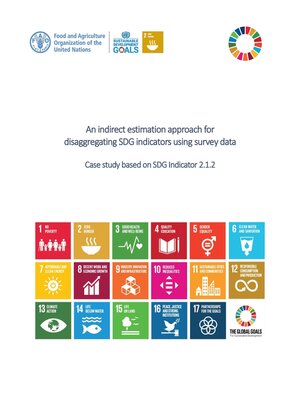An Indirect Estimation Approach for Disaggregating SDG Indicators Using Survey Data
ebook ∣ Case Study Based on SDG Indicator 2.1.2
By Food and Agriculture Organization of the United Nations

Sign up to save your library
With an OverDrive account, you can save your favorite libraries for at-a-glance information about availability. Find out more about OverDrive accounts.
Find this title in Libby, the library reading app by OverDrive.



Search for a digital library with this title
Title found at these libraries:
| Library Name | Distance |
|---|---|
| Loading... |
As the custodian United Nations (UN) agency of 21 Sustainable Development Goal (SDG) indicators, and a member of the Inter-Agency and Expert Group on SDG Indicators (IAEG-SDGs) and the Working Group on data disaggregation, the Food and Agriculture Organization of the United Nations (FAO) has been working to support countries in reporting SDG indicators at the required disaggregation level. To this end, FAO Office of Chief Statistician (OCS) has developed Guidelines on data disaggregation for SDG Indicators using survey data (FAO, 2021), which offer methodological and practical guidance for the production of direct and indirect estimates of SDG indicators having surveys as their main or preferred data source.
This technical report presents a case study based on the so-called "projection estimator", allowing the integration of two independent surveys for the production of synthetic disaggregated estimates. In particular, the publication presents a practical exercise focused on the production of disaggregated estimates for SDG Indicator 2.1.2, on the Prevalence of Moderate or Severe Food Insecurity in the population based on the Food Insecurity Experience Scale (FIES). This application – based on survey microdata from Malawi – expands and enriches the brief practical exercise presented in the Guidelines.







